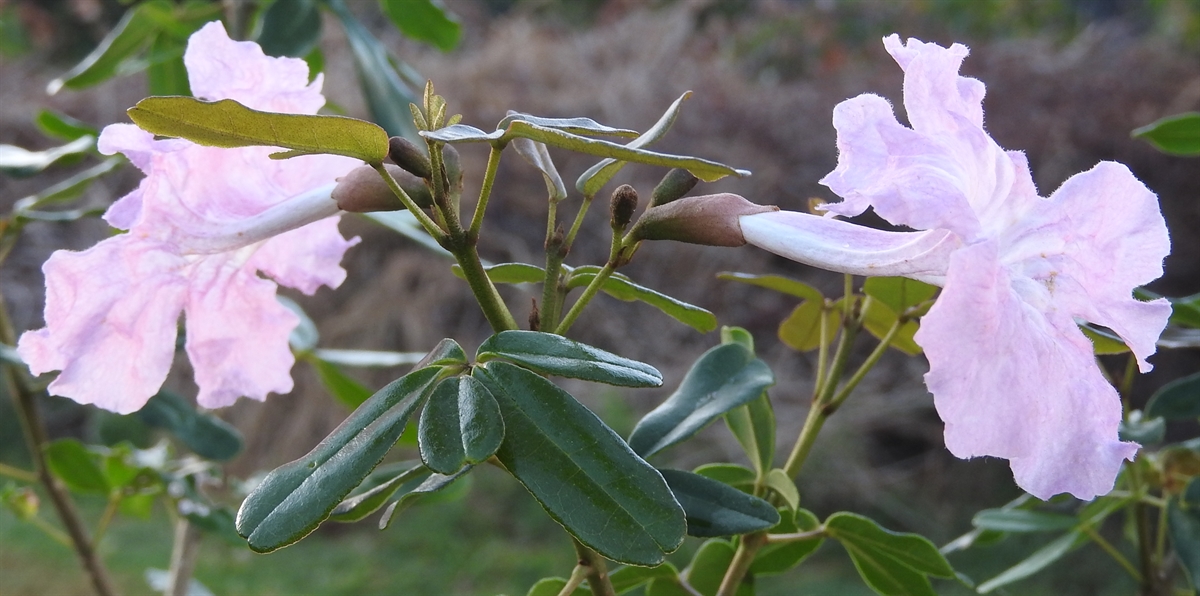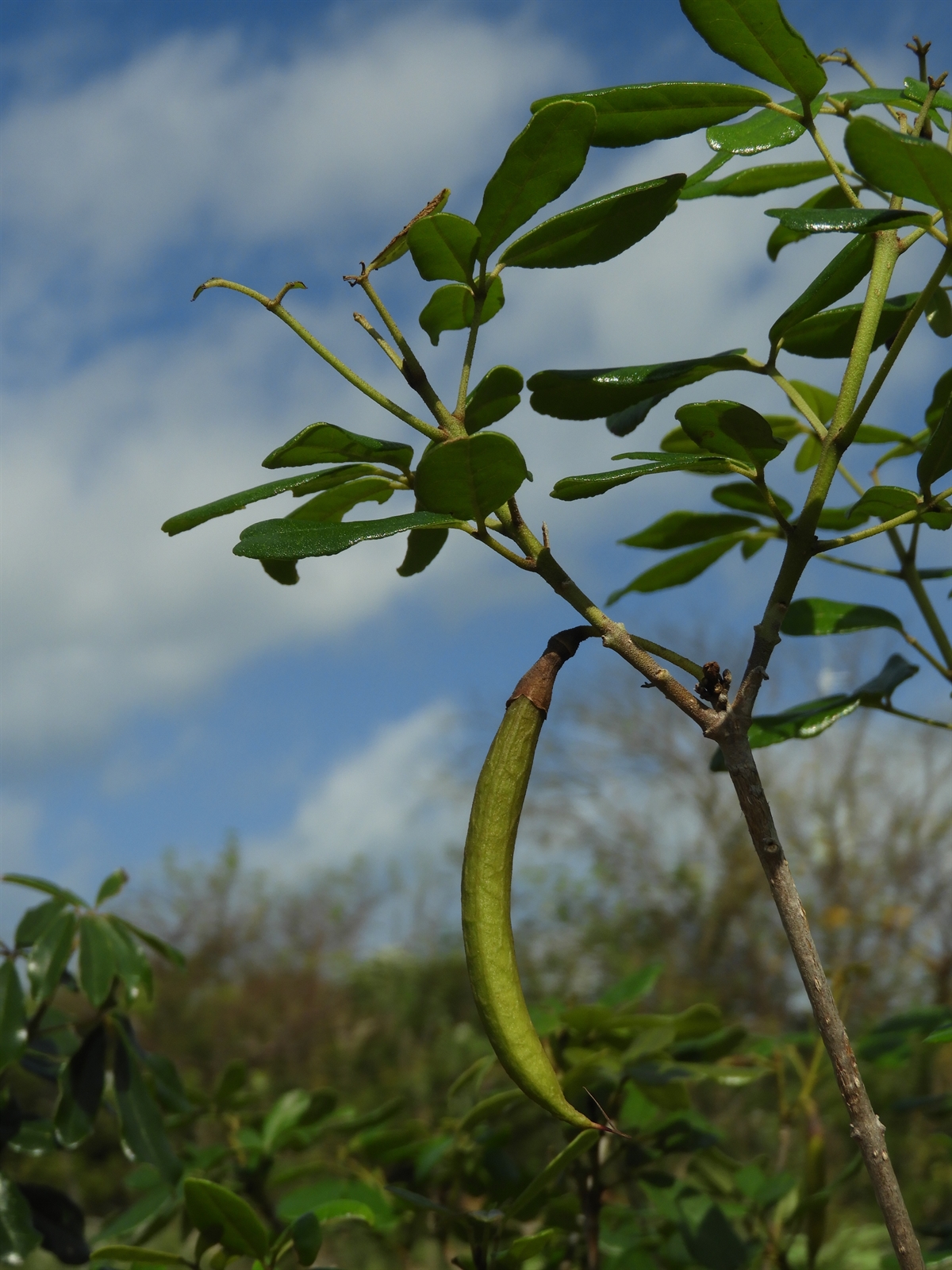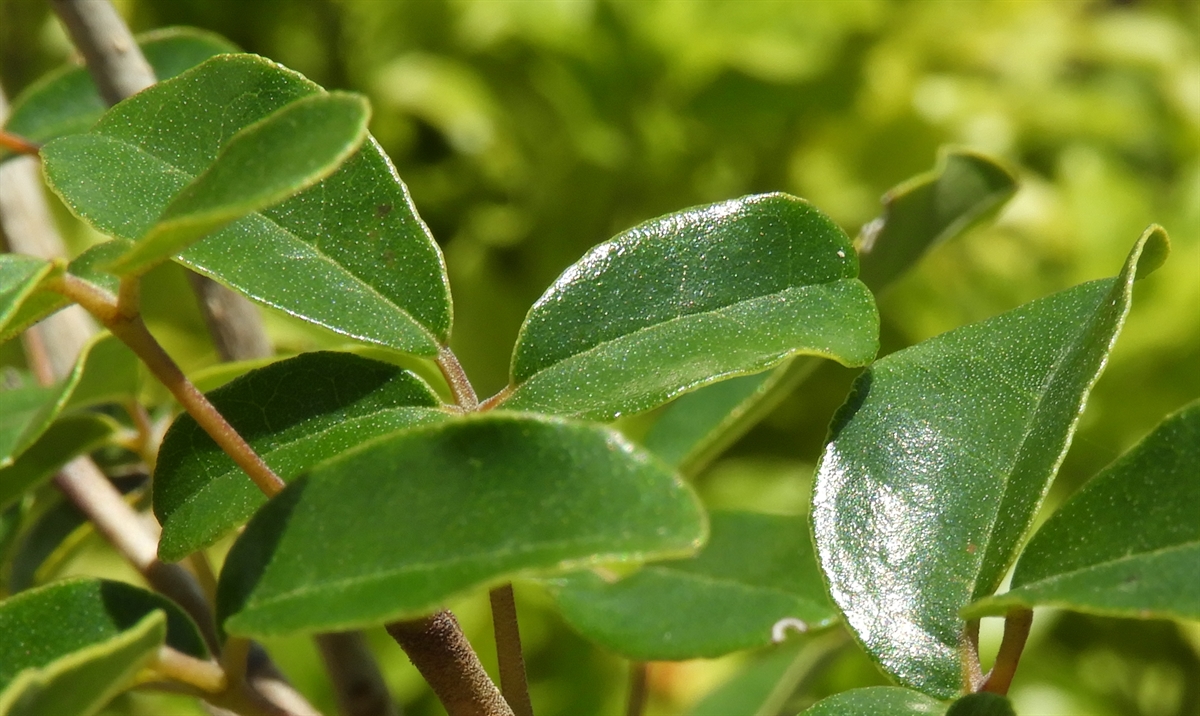Habit: Tabebuia lepidota grows as a large shrub to small tree up to 3 meters in height. The palmately compound leaves are arranged oppositely. There are 1-3 (primarily 3) leaflets that are oblong to oblanceolate, each to 5 cm, with a rounded or retuse leaf apex and an entire leaf margin. The central leaflet is petiolate, others sessile. The young stems and leaflets covered in lepidote scales.
The perfect, complete, zygomorphic flowers are arranged solitarily or in clusters of 2-3. The calyx has 5 fused, greenish sepals. The corolla has 5 pink/white fused petals that are bilabiate. There are 4 stamens fused to the corolla tube. The superior ovary has 2 locules and forms a capsule at maturity. The seeds are winged.
Habitat: Tabebuia lepidota occurs in Broadleaf Evergreen Formation –Shrublands (scrubland coppice) and open flats in limestone substrates.
Distribution: Tabebuia lepidota is known to occur on Great Inagua and Andros as well as Cuba.
Medicinal/Cultural/Economic usage: Tabebuia lepidota has is not known to be used medicinally in the Lucayan Archipelago


